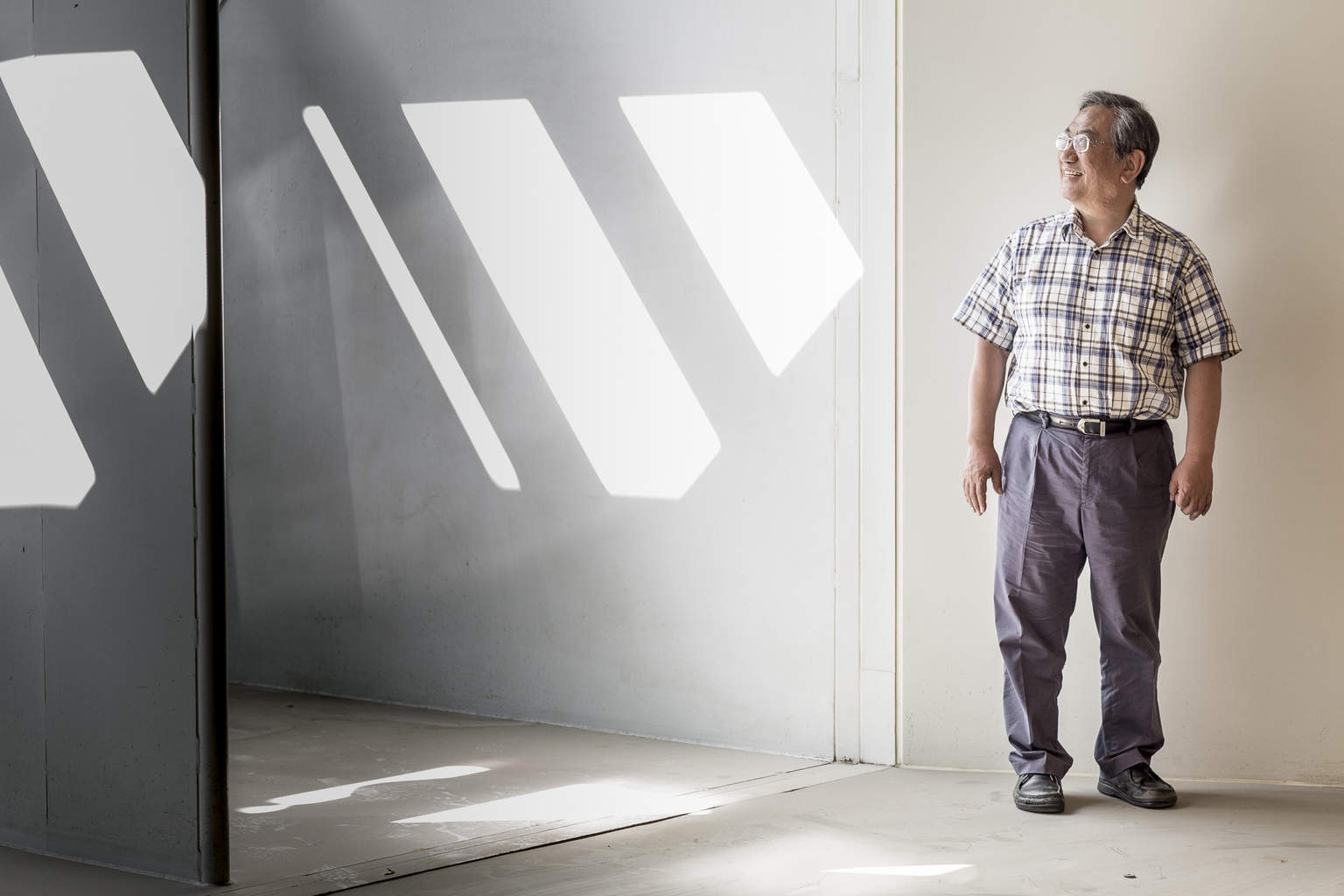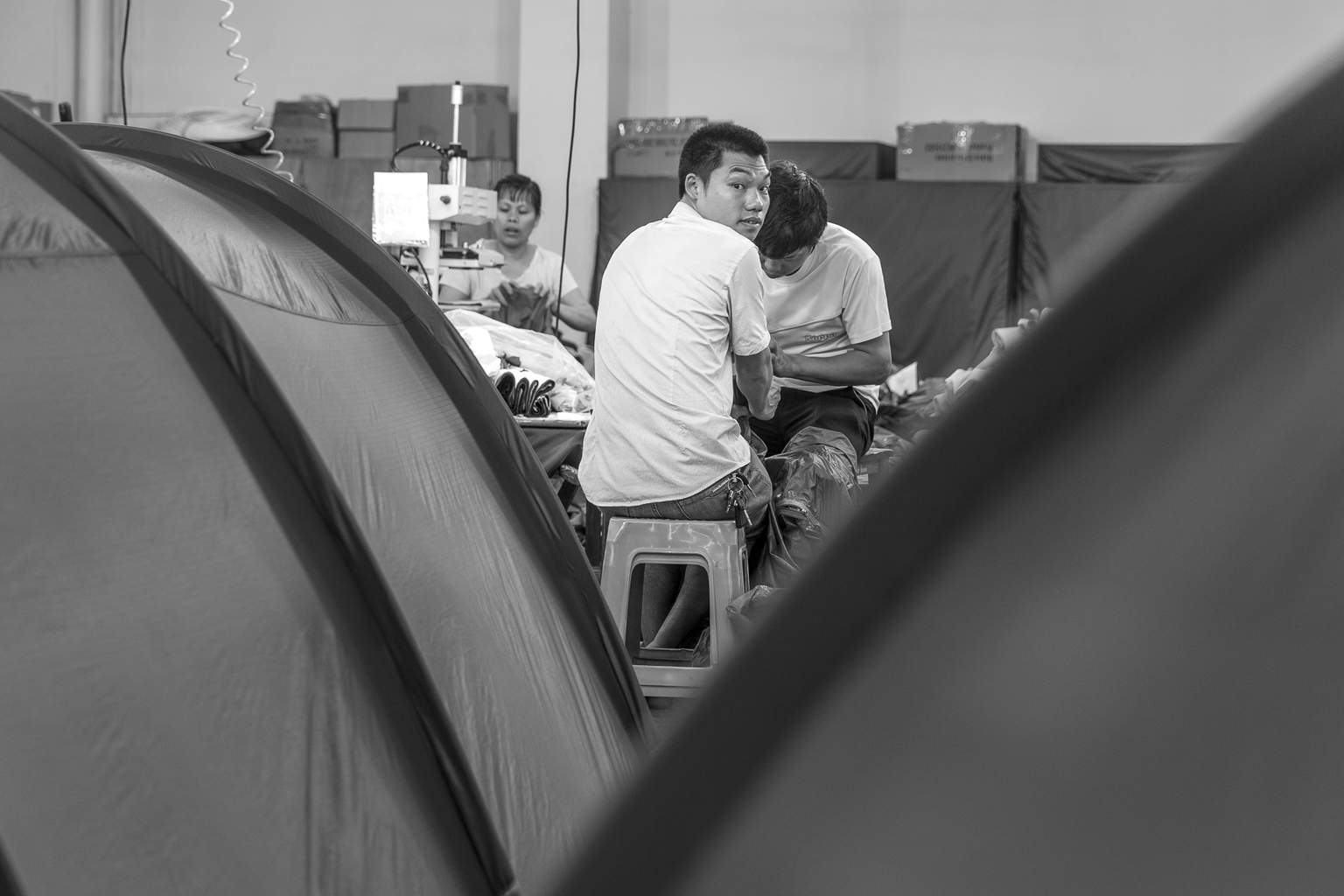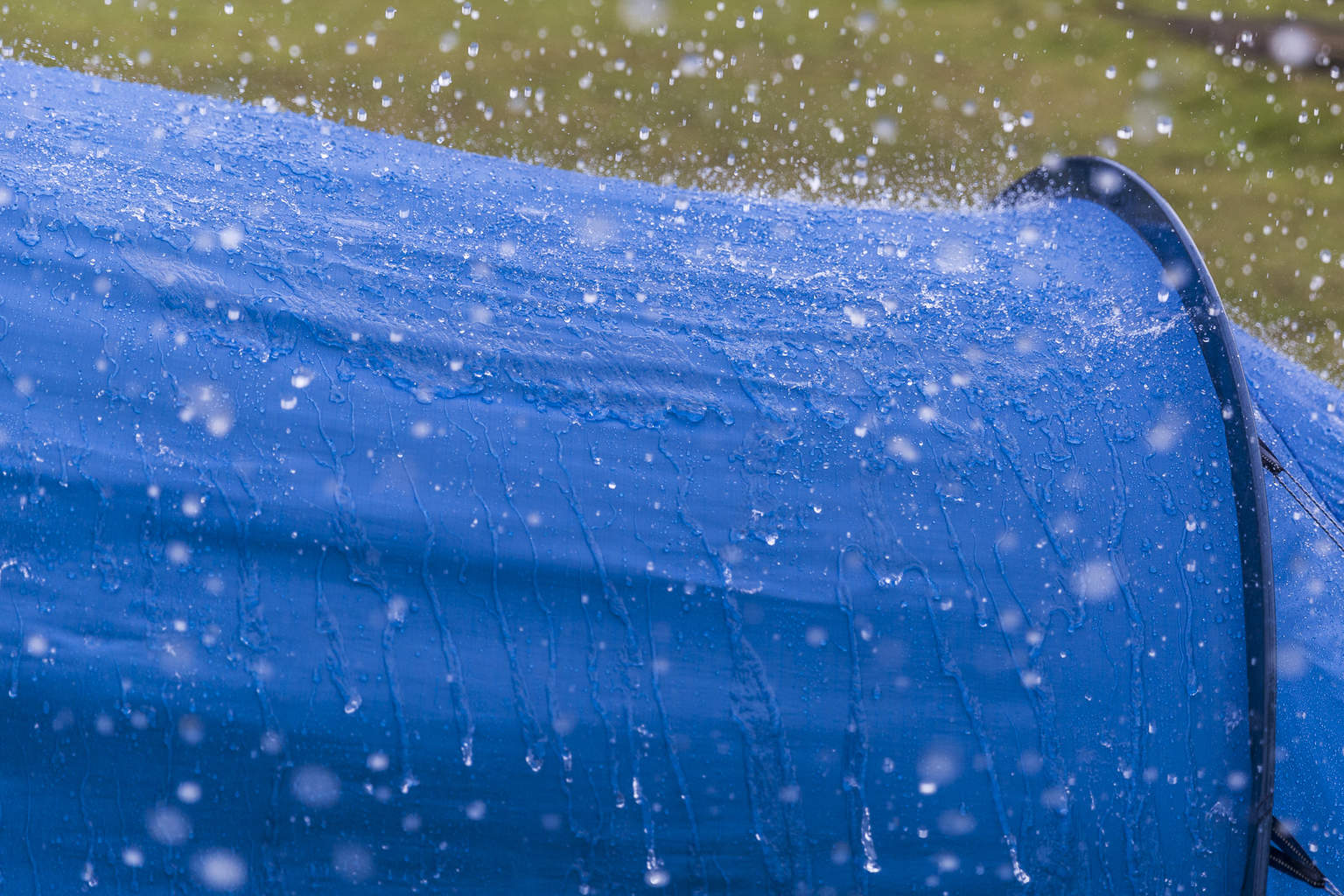Made in Asia
There was a time when “Made in China” meant cheap rubbish. “Made in Korea” the same. And “Made in Taiwan"… we won’t even go there. Images of Asian-origin, top-heavy container ships were associated with inhumane working conditions, low-quality products and highly polluting, toxic factories.
So with the huge emphasis we at Fjällräven put on quality and toxic-free, sustainable products, choosing Asian production partners may seem strange, even counter-productive. But things have changed.
After landing in Hong Kong, the boat to Mainland China takes about 40 minutes. It’s 2015, it’s hot and humid and we’re feeling a long way from home in Sweden. We’re on a fact-finding mission. To test-run our new equipment in the not-always-welcoming wildernesses of Asia. And while we’re here, we thought, we might as well visit some of our suppliers.
And first on the list is the world’s leading tent producer, in Zhongshan, China. Our relationship with factory owner, Mr Man Yee, has developed over a long period and conversation is fluid and easy between him and our R&D team as we all wander around his factory.
The five floors of the main building are buzzing with activity. There are tents everywhere. People are sewing, testing, cutting, clipping, checking and pitching tents all over the place. Man tells us how important knowledge and experience are – to gather people who have been working with tents for a long time, who know exactly what they are doing. Who know about materials, sustainability and construction.

On the walls there are different prizes and best-in-test awards from magazines like Outside and Backpacker. It’s with a refreshing but humble confidence that Man Yee personifies the philosophy behind the world’s leading tent factory. Yes, China is still an achingly efficient country to produce in. But now they can combine this with what Fjällräven's customers want most: quality.
After China, we head for South Korea. The DAC factory on the outskirts of Seoul feels more like the home of an eccentric art millionaire from California, than a high-tech aluminium factory for the outdoor industry. It’s all glass and concrete with eye-catching sculptures, indoor waterfalls and tranquil, leafy courtyards.
“My employees are my family,” says founder and owner Jake Lah. “Many have worked here for 20 years – we’re growing old together. For me, the key to success is not about earning money. It’s about wellbeing. And if my workers are healthy and happy, then we will make money. Not the other way around.”

South Korea is an industrial miracle that is perhaps still in the shadow of its northern neighbour, but since the war it has developed into a slick, highly-functioning economy with companies like Samsung, LG, Lotte and Kia leading the way; churning out trend-setting technology at a staggering rate. For a Swede, it’s a bit mindboggling. The old Scandinavian confidence takes a hit when you see just how far behind South Korea we are in many respects.

But, as luck would have it, South Koreans love Sweden. Since the fall of the Soviet Union, they’ve embarked on a Scandinavian love affair, exploring our wildernesses, lakes and forests. We like trekking and enjoy nature in similar ways. And our love for sustainability and quality also seem to have a lot in common.
Through our cooperation with DAC, we’ve seen this at close range. Every aluminium pole and peg for every top-quality tent in the world is made here. That’s quite a claim to fame. Mr Jake is well aware of his niche, and how all niche markets are led by a single player. For him, being number two is not an option.
An important reason for us at Fjällräven to choose DAC, is that they were first to tackle the environmentally dangerous anodising of aluminium by pioneering the concept of 'Green Anodising'.
Jake, on the other hand, feels his advanced wind tunnel is perhaps even more important. He built it not because he had to, but because he could.

“It was expensive. But if you want to be able to quality assure your constructions at this level, you have to be able to expose your tents to extreme tests. With regards to both water and wind,” he explains.
At the same time as he tells us about this, we’re standing in a James Bond-like glass cube with two men in white lab coats increasing the wind strength for the Abisko Lite 1. First it’s a strong gale. Then a storm breaks out. At 25m/s it looks like the wind will rip the UN-Blue one-man tent to shreds at any second. But it doesn’t. Test completed. Success.
And our conviction is also intact. South Korea is incredible.
MT vs. G-1000 Air
Both are quick-drying, breathable and light, so why are we replacing MT with G-1000 Air?
Meet Keb hike
The newest edition to the award-winning Keb range.
Get the low down on our down
Not all down jackets are created equal. Learn more about the differences and how we work with ethical down.
